 FOREWORD: I was lucky enough to be liked by CBGB head honcho, Hilly Kristal. I doubt he’d remember my name if he were still alive. But he knew my face.
FOREWORD: I was lucky enough to be liked by CBGB head honcho, Hilly Kristal. I doubt he’d remember my name if he were still alive. But he knew my face.
When Kristal opened CB’s 313 Gallery next door around ‘92, he hosted Smug Magazine’s 1st anniversary party, where I met and got stoned with Steve Bloom, editor of High Times – which led to a 20-years-plus writing gig at the glorious pro-marijuana publication. Months afterwards, Kristal cleaned out CBGB’s cement-floored basement space, put in a pizza oven, and had cool parties and shows downstairs.
I remember how proud Kristal was when he showed me and my friend, Rich Farnham, the basement space. I had blood all over my white t-shirt from getting jumped by some sexless assholes upstairs earlier that night. But Kristal didn’t even take notice of the blood. He probably thought I was moshing.
High Times threw a great party in CB’s basement and I burnt Joey Ramones’ hand passing him a doobie. I also recall Steve Bloom stopping an ugly altercation from happening that evening. My friend, photographer Dennis Kleiman, nearly got his ass kicked for no reason.
I must’ve seen over a hundred shows at the now-defunct CBGB club. And I hung out with just as many kick-ass rock bands in the small backstage area.
Anyway, back to Kristal. I mentioned how he liked me. But he could be a tough motherfucker if he needed to. I remember neighbors got the club fined for noise and when someone opened the back door for air on a sweaty night, he pulled the door closed with a vengeance and seriously reprimanded the offender. He often hung out at the entrance watching television and playing bouncer - a true hands-on manager. He was a man of good size and he didn’t take shit. Needless to say, I miss that old son of a bitch now.
The following interview took place months before CB’s closed down in October 2006.

Lower Manhattan’s Bowery section may lose its most iconic hotspot, CBGB, the dingy landmark nightclub run by aged-in-the-wool entrepreneur Hilly Kristal. A rent dispute could force the closure of this hallowed dank space unless a judge sympathizes with transplanted New Yorker Kristal, an unlikely underground rock ally whose weathered face, rugged exterior, and large frame resemble a lumberjack instead of an independent music savior.
“BRC (Bowery Residents Committee Inc.) is my landlord. They don’t own the building, but they have 33 more years of a net lease for a non-profit organization. They save the homeless, got $30 million from the city, state, and federal government last year, and paid the owners a stipend. There’s flop houses upstairs,” Kristal submits.
Studying Classical music in Philadelphia during the ‘50s, Kristal lived on a Central Jersey farm, studied opera, got to sing at Radio City Music Hall, managed Manhattan’s Village Vanguard (meeting legendary Jazz figures Miles Davis, Cannonball Adderley, and Carmen Mc Rae) before working for Ron Delsener’s Central Park Music Festival.
By the early ‘70s, Kristal opened still-thriving venue, CBGB, whose initials stood for Country BlueGrass Blues. Soon, a bunch of unkempt young musicians took advantage of Kristal’s policy of playing original songs as the obliging proprietor offered Sunday evenings for the fledging locals to develop their craft, helping the burgeoning punk scene get its propitious initiation. The Ramones, Talking Heads, Blondie, Television, Dead Boys, Heartbreakers, and a host of less-known acts got their first true exposure at Kristal’s rustic, unfinished venue, giving hope to inexperienced talent willing to breakaway from the snobbish exclusionary prog-rockers then clogging flailing mainstream American radio.
These minimalist marvels embraced the simple, elementary ‘50s approach towards rock and roll, bashing out compelling, if instrumentally rudimentary, tunes for a small audience of anti-hippies, neo-hipsters, social outcasts, and curiosity seekers. Intrigued by the virtue, persistence, and work ethic the early roughhewn punks revealed, Kristal continued booking bands whether or not they had signed record deals. By the late ‘90s, Kristal had expanded CBGB to include adjacent CB’s Gallery and an oven-kitchen basement space, CBGB Lounge, for parties and events.
“One of the bars inside CBGB may be the oldest in the Bowery. Next door and downstairs I built myself. It was good for therapy. Knocking down walls with a sledgehammer. It’s like taking out frustrations on someone you hate,” the straight shootin’ Kristal divulges.
Critical music listeners found the greatest drawing card to be CBGB’s powerful sound system, constructed precisely for their discriminating ears.
“Way back I got Charlie Martin, who still lives around here, and Norman Dunn, to build it,” Kristal offers. “Now we have a system places two to three times bigger would love. We have a lot of headroom, which specifically means, you don’t run it all the way up. You could play with it at lower levels to tune in and get the best sound. Also, the shape of the room - elongated - allows for better sound because there’s enough clutter, beer signs, posters, and plaster, that breaks it up and adds to it. I paid for that sound system for over ten years. Even today, record companies want to hear and record their bands here.”
Though Kristal’s club continues to prosper, and as CBGB boutique clothing line gains a foothold in the apparel market, the owners of 311 and 313 Bowery have now proposed an exorbitant rental hike threatening current operations.
“Last spring, three representatives cam around and said, ‘After we get the Certificate of Occupancy, we’ll be asking $55 a square foot,’ which adds up to $38,000 to 40,000 per month,” Kristal explains. “As of now, the only money owed is in the hands of a judge. No one could touch it. Over three years, we didn’t get a bill, but we paid rent. Each year, it went up a little bit. Come February, they said we owed $95,000. That includes interest. My attorney said, ‘You don’t know if you’re gonna get a lease.’ So now it’s in the hands of a jury. The judge told both parties he wants to work it out and said they can’t charge interest on money not being billed.”
When asked if he’d like to retire from the business, Kristal shoots back a puzzled look and asks, “Why?”
“When we started CBGB, Country was not just Nashville. It included folk and early Bob Dylan as part of the scene. Bluegrass had a lot of fiddlers conventions. Folk was at the top of the charts, but now the people doing that type of music are considered alt-Country.” He further recalls, “There were still bums and derelicts hanging around so it didn’t really work out. I gradually got into Jazz bands until discovering all these new bands that didn’t have anywhere else to play. Everything was easier in the ‘70s. But I made a policy that the only way you could play here was if you made your own music. That’s not a way to make a lot of money, but my interest was devoting time to developing talent, no matter how crude. The Television and Ramones Sunday evening shows. Later on, we did hardcore on Sunday afternoon to get the kids out. It was good.”
Kristal looks back with fondness highlighting some of the great moments CBGB entertained. “When the Shirts and Talking Heads auditioned the same night, to me, it was wonderful. They both had a way to go, but that was a major happening. One recent memory was John Cale (ex-Velvet Underground) during the Christmas season playing two sets, one at 2:30 AM. They wouldn’t let him off the stage. It was packed. Finally, he got out his cello.”
One of the crazier nights he remembers was when outrageous locals the Dead Boys blew English punks, the Damned, off the stage. Also, the Plasmatics, led by breast-y powerhouse Wendy O. Williams, often fascinated Kristal. But it may have been Patti Smith’s early ’74 shows that put the club on the map shortly after its December ’73 opening. One thing all these acts had in common was bringing unbridled enthusiasm back to what was fast becoming a stale rock scene. Though Smith, Jon Spencer Blues Explosion, and Country star Alan Jackson have recently sold out CBGB, its main function continues to be exposing newer, less renowned artists. Kristal’s genuine affection and appreciation for hungry acts remains admirable. He has audaciously avoided being a corporate sell out, holding on to integrity much the same way the Ramones, Patti Smith, and Talking Heads have.
Though cigarette companies, at times, have offered substantial advertising dollars, Kristal never accepted their proposals. On a related issue, he says, “I don’t smoke now, but I used to smoke four packs a day. At first, I didn’t like the way the mayor banned smoking in clubs, but it is working.”
A sincere humanist, Kristal retains a mild modicum of anti-establishment idealism. That same enduring individualism extends to his thoughts on political topics. Kristal is at odds with the city’s handling of noise pollution despite crediting former mayor Giuliani for lower crime rate.
“Giuliani was lucky New York’s economy reflected the country’s in ’92. Then, he found national recognition for the way he handled 9-11. He spent lots of money to rid crime. The problem I see is with the apartments. He did things with too broad a stroke. He was a little careless and insensitive to the poorer population. He may have done some good things, but he worried about the sound of music bothering people outside the clubs. What about the sound of loud trucks going by?”
Recently, CBGB clothing and gear have gained international attention. T-shirts, hats, key chains, tote bags, etc. opened eyes at boutique shows at Manhattan’s Jacob Javitz Center, in Vegas, London, and soon, Barcelona. He sells to store chains and competes well against brand names and smaller competitors.
Just don’t fuck with the big ol’ man. I once saw Kristal get pissed off on a muggy July evening when a few kids opened the backdoor for fresh air. He slammed the door shut, yelled at the culprits, then explained how the noise (music) disturbed neighbors and drew police attention when the sound reached the alleyway.
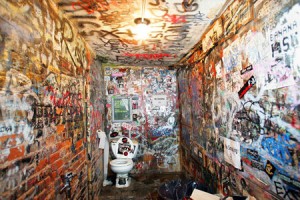
Recently, Underground Garage host Steven Van Zandt and Nike have gotten into the act to save CBGB. The renowned Little Steven (solo artist/ Springsteen guitarist/ The Sopranos gangster) got his Renegade Nation to host a Million Pug March on June 11th as part of Project Save CBGB, steering clear of the rental dispute to focus instead on landmark preservation. Meanwhile, Nike got into the act and will stage a Central Park Run with entertainment provided by Joan Jett, the Donnas, and Fountains Of Wayne. They’ll donate $1 of each race entry to Project Save CBGB. Furthermore, Kristal is gathering some big name bands to play benefits in August.
With all this attention being paid to his club, how does a famous club owner spend his nights in the Big Apple?
“I go home and read a book or go to a movie or theatre with my girlfriend.”
FOREWORD: Perhaps the title of Death Cab For Cutie’s ’03 album, Transatlanticism, was precociously prophetic. Its success led to a major label signing and better corporate support for ‘05s engaging Plans. And three years hence, the band, led by Ben Gibbard, gained complete universal acceptance with ardent single, “I Will Possess Your Heart,” from adventurous departure, Narrow Steps.
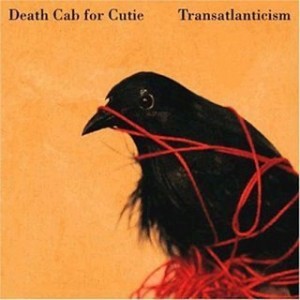 only to be mired by longing, loneliness, and loss.
Feelings of detachment and discontentment envelop the sentimental title track, the balladic “Lightness,” and the tranquil piano pledge “Passenger Seat.” The anthemic claustrophobic nightmare “We Looked Like Gaints” and the upbeat turnabout “The Sound Of Settling” pick up the pace but retain the dire moodiness, ambling through the dismal diagnosis of ‘hunger twisting my stomach into knots’ and dismayed by ‘the black night with all its foul temptations.’
As for the Postal Service, an enchanting minimalist complexity stimulates the percolating percussive syncopation and oscillating phase-shifting modulations of Give Up. Rilo Kiley’s Jenny Lewis provides sympathetic descant vocals to buoy Gibbard’s hushed moans on the new wave-ish electro-deconstruction “The District Sleeps Alone Tonight” and the bleating symphonic meditation “Recycled Air.” Seasoned Seattle folkie Jen Wood’s honeyed soprano counters Gibbard’s apologetic manifesto on the disco-fied robotic orchestral “Nothing Better.”
AW: What inspired you to get into music initially?
BEN GIBBARD: There were always records on when I was a kid. My dad was always fooling around on acoustic guitar. He’d listen to the Beatles, Badfinger, AC/DC, Devo. In college, I got turned on to Beat literature. There’s a poetic nature to my songs. I want them to be about something and have meaning. I don’t want them to be throwaways.
Your contemplative confessional serenades blanket Transatlanticism.
Yeah. Transatlanticism came out of a hopeless period - that sense of desperation, the toils of life weighing down on me more than usual. Life’s better these days.
Is it difficult to express frustration without becoming vindictive?
No. “Tiny Vessel” is close to vindictive, but I’ve never found anything I wrote to be too harsh. That song’s about a relationship that ended in Silverlake. It’s a long story so obviously about somebody I wouldn’t want to admit who it is. In my personal life, there’ve been times I couldn’t believe how disgusted I was letting lust overtake my brain. A sense of loneliness and yearning for someone you have no business being with takes over the practical thinking part of the brain and turns it off for a chunk of time.
Your Postal Service tape exchange project, Give Up, with Dntel's Jimmy Tamborello, seemed reminiscent of electronic weirdos Matmos, with its crunchy brittle beats and understated whim.
only to be mired by longing, loneliness, and loss.
Feelings of detachment and discontentment envelop the sentimental title track, the balladic “Lightness,” and the tranquil piano pledge “Passenger Seat.” The anthemic claustrophobic nightmare “We Looked Like Gaints” and the upbeat turnabout “The Sound Of Settling” pick up the pace but retain the dire moodiness, ambling through the dismal diagnosis of ‘hunger twisting my stomach into knots’ and dismayed by ‘the black night with all its foul temptations.’
As for the Postal Service, an enchanting minimalist complexity stimulates the percolating percussive syncopation and oscillating phase-shifting modulations of Give Up. Rilo Kiley’s Jenny Lewis provides sympathetic descant vocals to buoy Gibbard’s hushed moans on the new wave-ish electro-deconstruction “The District Sleeps Alone Tonight” and the bleating symphonic meditation “Recycled Air.” Seasoned Seattle folkie Jen Wood’s honeyed soprano counters Gibbard’s apologetic manifesto on the disco-fied robotic orchestral “Nothing Better.”
AW: What inspired you to get into music initially?
BEN GIBBARD: There were always records on when I was a kid. My dad was always fooling around on acoustic guitar. He’d listen to the Beatles, Badfinger, AC/DC, Devo. In college, I got turned on to Beat literature. There’s a poetic nature to my songs. I want them to be about something and have meaning. I don’t want them to be throwaways.
Your contemplative confessional serenades blanket Transatlanticism.
Yeah. Transatlanticism came out of a hopeless period - that sense of desperation, the toils of life weighing down on me more than usual. Life’s better these days.
Is it difficult to express frustration without becoming vindictive?
No. “Tiny Vessel” is close to vindictive, but I’ve never found anything I wrote to be too harsh. That song’s about a relationship that ended in Silverlake. It’s a long story so obviously about somebody I wouldn’t want to admit who it is. In my personal life, there’ve been times I couldn’t believe how disgusted I was letting lust overtake my brain. A sense of loneliness and yearning for someone you have no business being with takes over the practical thinking part of the brain and turns it off for a chunk of time.
Your Postal Service tape exchange project, Give Up, with Dntel's Jimmy Tamborello, seemed reminiscent of electronic weirdos Matmos, with its crunchy brittle beats and understated whim.
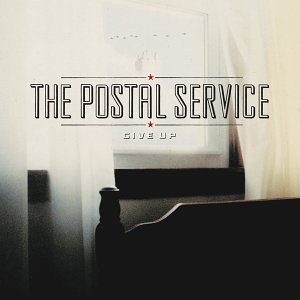 The context worked. It appealed to a way my brain works. People ask, 'How do you make a record sound that way when two people are living apart?' Essentially, it's a musical version of editing. Jimmy would send me a story and I'd edit it down to what I thought was the best story possible and then put my tracks on top. Jimmy does the hard work - the music. I just cut it down, wrote out the feelings I got from it, put finishing touches, sent it back.
Is it difficult to sing autobiographical material like Postal Service's ominous "The District Sleeps Alone Tonight," "Brand New Colony," or "This Place Is A Prison"?
I think it's easier. As I start to work on new material, I'm making a conscious effort to do everything differently. I want to approach writing from another angle. It's been easier for me to express something, fill in details, and make it come alive because it's true to my life. At the same time, I'm in a position where I'm more concerned with trying to write pure fiction as if I were a novelist. That's my new challenge. To make a story come alive when you haven't experienced it is amazing.
"Sleeping In" accepts that challenge. You're 'sleeping in' when Kennedy was shot!
Totally. Like when Transatlanticism came together, it was like making a surreal world for myself. It jumped off the page and became songs. David Berman (of the Silver Jews) and Lawrence Ferrenghetti are poets I like. Usually poety makes me cringe. It's attempted by too many and executed by too few. To speak in simple language and create incredible images counters obnoxious poetry like 'the transcendental spiders crawling the walls of existence' or whatever pretentious bullshit. Berman could write an awesome poem about a snowman melting and make it into a clver anecdote without resorting to empty language.
Earlier, you worked with Dntel on Life Is Full Of Possibilities. Obvious question: Is "Evan and Chan" about drug-addled indie pop legend Evan Dando (ex-Lemonheads) and overly sensitive singer-instrumentalist Chan Marshall alias Cat Power)?
It's about a dream I had about Evan and Chan. I'd just gotten a car at my grandma's house and I was driving cross-country back to Seattle and stayed at a hotel and had this crazy dream of being at a random Evan Dando reunion show and Chan being there. She either couldn't speak or was speaking in tongues. Nothing made sense but I felt compelled to write about it. I saw Evan awhile back at a Chop Suey show attended by only about 40 people. It was sad. He hopped up onstage, burned through 12 songs without saying hello. Everyone there was incredibly excited he was there. Someone was filming the show, so he stopped mid-song to let the guy give him the tape. He bailed early. But I've always liked his songs.
You've always enjoyed good pop. You've re-done Cyndi Lauper's "Girls Just Want To Have Fun" and Eurythmics "Here Comes The Rain Again" on miscellaneous EP"s or compilations.
I'm a pop lover. I've done Avril Lavigne's "Complicated" live. I'm very much over the rock stigma of only liking things from a small pool of music. It's incredible to see the response for that fucking amazing Outkast song, "Hey Ya." Beyonce's "Crazy In Love" is also a great single.
On The Photo Album, your music became more sublime and provocative without losing the immediacy of previous recrodings. And the drum track is way high in the mix.
I played drums on We Have The Facts. While I'm not a great drummer, Chris pushed the drums up to cover the fuck-ups (for The Photo Album). We toured those songs into the ground. By the time we went into the studio, we recorded them exactly the same way we did them live. But now it conjures up more negative than positive feelings. It was a dark period where we couldn't communicate properly with our drummer. We were bored with the material and the record suffers. I love the record but as I get more distance from it, I realize there were very few flurries of creativity. On the other hand, You Can Play These Songs With Chords was meant for fans. It takes me back to a time when we were working on music in houses - a more innocent time. Our guard was down. It was liberating.
But Transatlanticism was the most fulfilling experience. It opened up new channels and I now feel excited about our next album. The number one big difference is we don't bring out new material on tour until it's recorded. We deliberate more and arrange them in a practice space better. Also, having drummer Jason Mc Gerr, an old friend, in the band, helped. Once we got in a room with him, there was no audition. We just started working immediately. In any band dynamic, there tends to be a theme. We were able to work with a higher level of trust. We didn't care who did or didn't play on a song, as long as it sounded fine. We sidestepped the dilemma of having everyone worry if they had parts in each song.
"The New Year" yearns for simpler times when the world's flat and airplanes and freeways don't exist. It may be Transatlanticism's most direct statement.
That whole album came together and has the appearance of a concise statement. The songs had a theme that at this point of my life came together nicely. We thought this record might isolate fans, but it turned out real well.
The thrice-mothered "Death Of An Interior Decorator" seemingly concerns a materialistic lady who moves beyond self-obsession.
That's a song based on Woody Allen's Interiors. But I like your take. The movie's about a disruptive relationship. For me, it's a juxtaposition of being young, innocent, finding love, then getting old and jaded. Vices become bad habits. People who partied too much may have become alcoholics. It's sorta like a John Mellencamp song, but not really. I love Mellencamp.
You've contributed three stripped down songs to a split single with American Analog Set's Andrew Kenny. Tell me about that.
Ben Dickey is an indie rock rennaisance man tour-managing Spoon and Nada Surf while putting out 'Home Series' EP's. One of the first was from Kind Of Like Spitting, then Britt Daniel (Spoon) and Conor Oberst (Bright Eyes) did one. They have letter-pressed covers. The theme of my EP is home. I peppered it with lo-fi acoustic stuff. It's for people who are already fans.
-John Fortunato
The context worked. It appealed to a way my brain works. People ask, 'How do you make a record sound that way when two people are living apart?' Essentially, it's a musical version of editing. Jimmy would send me a story and I'd edit it down to what I thought was the best story possible and then put my tracks on top. Jimmy does the hard work - the music. I just cut it down, wrote out the feelings I got from it, put finishing touches, sent it back.
Is it difficult to sing autobiographical material like Postal Service's ominous "The District Sleeps Alone Tonight," "Brand New Colony," or "This Place Is A Prison"?
I think it's easier. As I start to work on new material, I'm making a conscious effort to do everything differently. I want to approach writing from another angle. It's been easier for me to express something, fill in details, and make it come alive because it's true to my life. At the same time, I'm in a position where I'm more concerned with trying to write pure fiction as if I were a novelist. That's my new challenge. To make a story come alive when you haven't experienced it is amazing.
"Sleeping In" accepts that challenge. You're 'sleeping in' when Kennedy was shot!
Totally. Like when Transatlanticism came together, it was like making a surreal world for myself. It jumped off the page and became songs. David Berman (of the Silver Jews) and Lawrence Ferrenghetti are poets I like. Usually poety makes me cringe. It's attempted by too many and executed by too few. To speak in simple language and create incredible images counters obnoxious poetry like 'the transcendental spiders crawling the walls of existence' or whatever pretentious bullshit. Berman could write an awesome poem about a snowman melting and make it into a clver anecdote without resorting to empty language.
Earlier, you worked with Dntel on Life Is Full Of Possibilities. Obvious question: Is "Evan and Chan" about drug-addled indie pop legend Evan Dando (ex-Lemonheads) and overly sensitive singer-instrumentalist Chan Marshall alias Cat Power)?
It's about a dream I had about Evan and Chan. I'd just gotten a car at my grandma's house and I was driving cross-country back to Seattle and stayed at a hotel and had this crazy dream of being at a random Evan Dando reunion show and Chan being there. She either couldn't speak or was speaking in tongues. Nothing made sense but I felt compelled to write about it. I saw Evan awhile back at a Chop Suey show attended by only about 40 people. It was sad. He hopped up onstage, burned through 12 songs without saying hello. Everyone there was incredibly excited he was there. Someone was filming the show, so he stopped mid-song to let the guy give him the tape. He bailed early. But I've always liked his songs.
You've always enjoyed good pop. You've re-done Cyndi Lauper's "Girls Just Want To Have Fun" and Eurythmics "Here Comes The Rain Again" on miscellaneous EP"s or compilations.
I'm a pop lover. I've done Avril Lavigne's "Complicated" live. I'm very much over the rock stigma of only liking things from a small pool of music. It's incredible to see the response for that fucking amazing Outkast song, "Hey Ya." Beyonce's "Crazy In Love" is also a great single.
On The Photo Album, your music became more sublime and provocative without losing the immediacy of previous recrodings. And the drum track is way high in the mix.
I played drums on We Have The Facts. While I'm not a great drummer, Chris pushed the drums up to cover the fuck-ups (for The Photo Album). We toured those songs into the ground. By the time we went into the studio, we recorded them exactly the same way we did them live. But now it conjures up more negative than positive feelings. It was a dark period where we couldn't communicate properly with our drummer. We were bored with the material and the record suffers. I love the record but as I get more distance from it, I realize there were very few flurries of creativity. On the other hand, You Can Play These Songs With Chords was meant for fans. It takes me back to a time when we were working on music in houses - a more innocent time. Our guard was down. It was liberating.
But Transatlanticism was the most fulfilling experience. It opened up new channels and I now feel excited about our next album. The number one big difference is we don't bring out new material on tour until it's recorded. We deliberate more and arrange them in a practice space better. Also, having drummer Jason Mc Gerr, an old friend, in the band, helped. Once we got in a room with him, there was no audition. We just started working immediately. In any band dynamic, there tends to be a theme. We were able to work with a higher level of trust. We didn't care who did or didn't play on a song, as long as it sounded fine. We sidestepped the dilemma of having everyone worry if they had parts in each song.
"The New Year" yearns for simpler times when the world's flat and airplanes and freeways don't exist. It may be Transatlanticism's most direct statement.
That whole album came together and has the appearance of a concise statement. The songs had a theme that at this point of my life came together nicely. We thought this record might isolate fans, but it turned out real well.
The thrice-mothered "Death Of An Interior Decorator" seemingly concerns a materialistic lady who moves beyond self-obsession.
That's a song based on Woody Allen's Interiors. But I like your take. The movie's about a disruptive relationship. For me, it's a juxtaposition of being young, innocent, finding love, then getting old and jaded. Vices become bad habits. People who partied too much may have become alcoholics. It's sorta like a John Mellencamp song, but not really. I love Mellencamp.
You've contributed three stripped down songs to a split single with American Analog Set's Andrew Kenny. Tell me about that.
Ben Dickey is an indie rock rennaisance man tour-managing Spoon and Nada Surf while putting out 'Home Series' EP's. One of the first was from Kind Of Like Spitting, then Britt Daniel (Spoon) and Conor Oberst (Bright Eyes) did one. They have letter-pressed covers. The theme of my EP is home. I peppered it with lo-fi acoustic stuff. It's for people who are already fans.
-John Fortunato
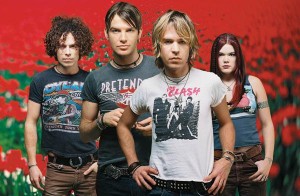
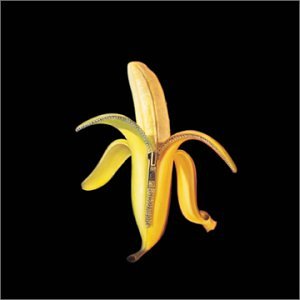

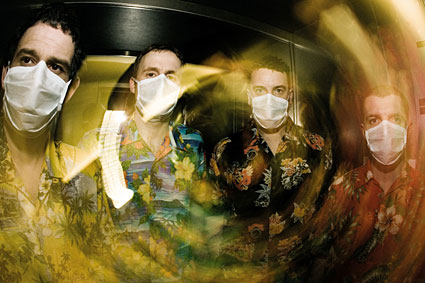
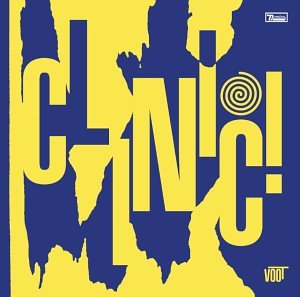
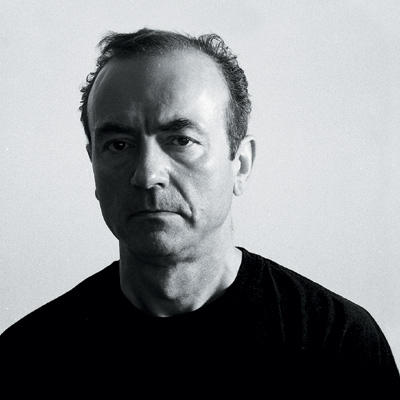
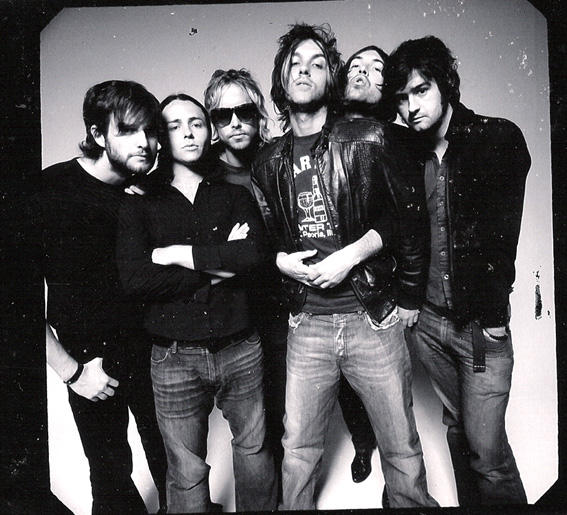






 FOREWORD: I got to know the Burning Brides pretty well during 2001 to 2003. I had originally interviewed Dimitri for Aquarian Weekly and thereafter met them at a show and invited them to sleepover following a sold out Mercury Lounge gig. I also took Dimitri and his now-wife Melanie out for pizza in their old hometown of Philly with my wife and kids. The following piece never ran in High Times so it’s being posted here in front of the earlier Aquarian Weekly article. Needless to say, the Burning Brides are true marijuana advocates.
FOREWORD: I got to know the Burning Brides pretty well during 2001 to 2003. I had originally interviewed Dimitri for Aquarian Weekly and thereafter met them at a show and invited them to sleepover following a sold out Mercury Lounge gig. I also took Dimitri and his now-wife Melanie out for pizza in their old hometown of Philly with my wife and kids. The following piece never ran in High Times so it’s being posted here in front of the earlier Aquarian Weekly article. Needless to say, the Burning Brides are true marijuana advocates. Talk about meeting one of your favorite artists and then getting to hang with him before and after a sweat-drenched sold out gig. That’s what happened in 2003 when I visited Chicago to do a brewpub tour and catch Peter Shelley’s lifelong punk-pop outfit, the Buzzcocks, across the street from historic Wrigley Field. One of the friendliest and least conceded artists I’ve encountered, Shelley had just signed with indie icon, Merge Records, and released an enjoyable eponymous Buzzcocks disc he was supporting by touring the US and beyond.
Inarguably a seminal ‘70s punk legend, Buzzcocks vocalist-guitarist Peter Shelley continues to compose exuberant rockers and perform thrilling live shows well into his fifties. Along with former bandleader Howard Devoto (who went on to form Magazine with Barry Adamson), then-bassist Steve Diggle, and long-departed drummer John Maher, the Buzzcocks delivered the frenzied 7” Spiral Scratch E.P. in ’77 just as The Clash, Sex Pistols, and Damned began defining the exciting British underground scene. Sans Devoto, Shelley took over lead responsibilities, Diggle moved to guitar and vocals, and then-newcomer Steve Garvey plucked bass on British-only albums Another Music In A Different Kitchen and its resplendent ’78 follow-up, Love Bites. The most pop-rooted, melody-related combo of the initial Brit-punk era, these inspirational Manchester natives reached an early zenith with the delightful A Different Kind Of Tension, culling the masterful Singles Going Steady from priceless 45’s prior to disbanding in March ’81.
Talk about meeting one of your favorite artists and then getting to hang with him before and after a sweat-drenched sold out gig. That’s what happened in 2003 when I visited Chicago to do a brewpub tour and catch Peter Shelley’s lifelong punk-pop outfit, the Buzzcocks, across the street from historic Wrigley Field. One of the friendliest and least conceded artists I’ve encountered, Shelley had just signed with indie icon, Merge Records, and released an enjoyable eponymous Buzzcocks disc he was supporting by touring the US and beyond.
Inarguably a seminal ‘70s punk legend, Buzzcocks vocalist-guitarist Peter Shelley continues to compose exuberant rockers and perform thrilling live shows well into his fifties. Along with former bandleader Howard Devoto (who went on to form Magazine with Barry Adamson), then-bassist Steve Diggle, and long-departed drummer John Maher, the Buzzcocks delivered the frenzied 7” Spiral Scratch E.P. in ’77 just as The Clash, Sex Pistols, and Damned began defining the exciting British underground scene. Sans Devoto, Shelley took over lead responsibilities, Diggle moved to guitar and vocals, and then-newcomer Steve Garvey plucked bass on British-only albums Another Music In A Different Kitchen and its resplendent ’78 follow-up, Love Bites. The most pop-rooted, melody-related combo of the initial Brit-punk era, these inspirational Manchester natives reached an early zenith with the delightful A Different Kind Of Tension, culling the masterful Singles Going Steady from priceless 45’s prior to disbanding in March ’81.


